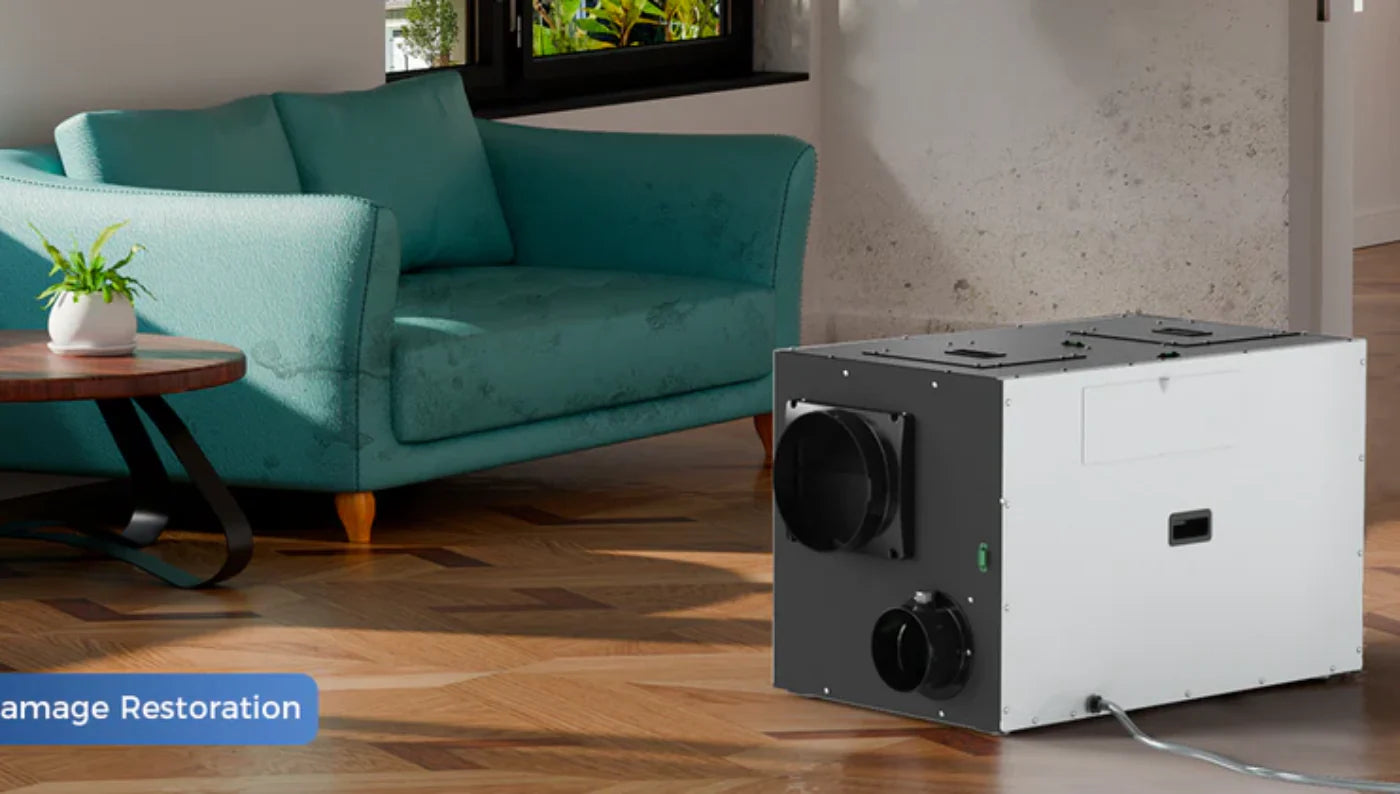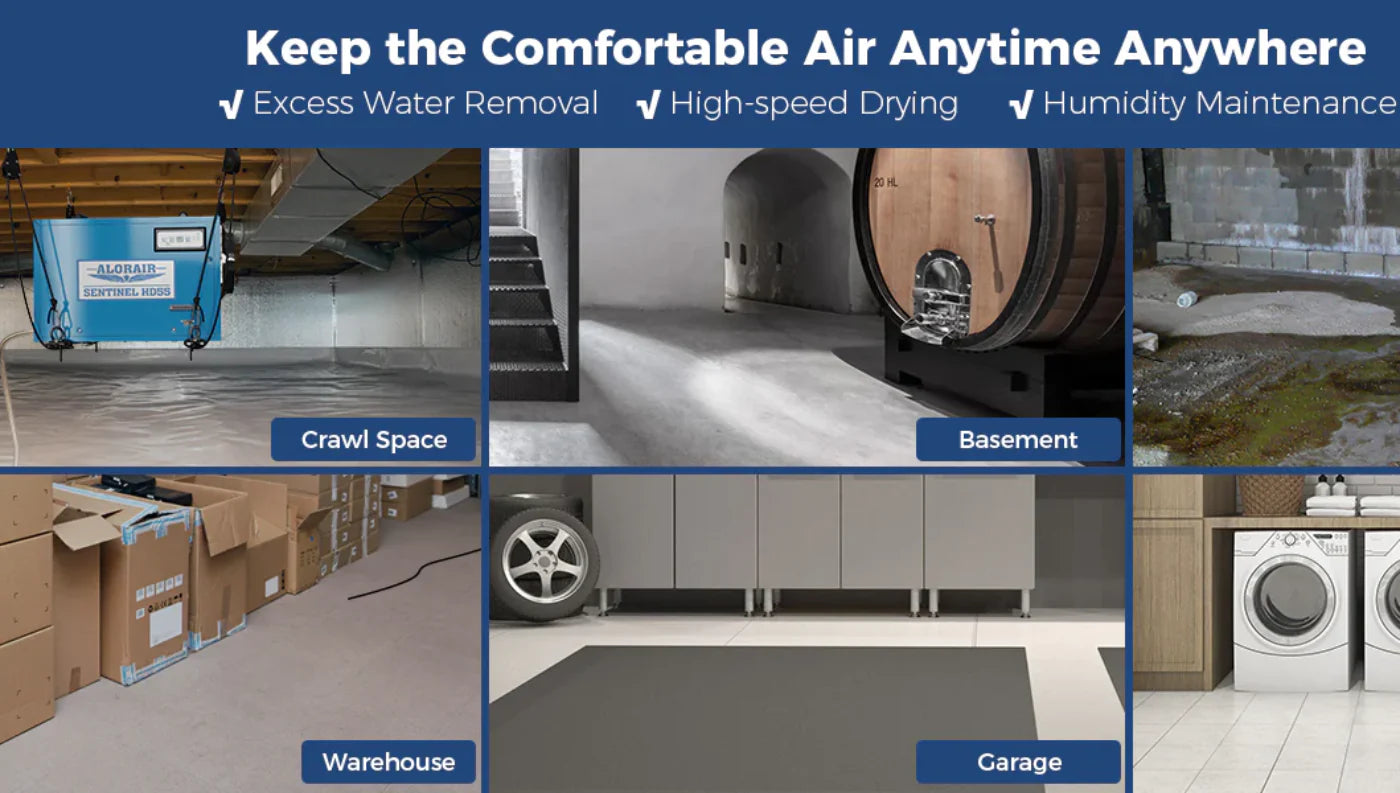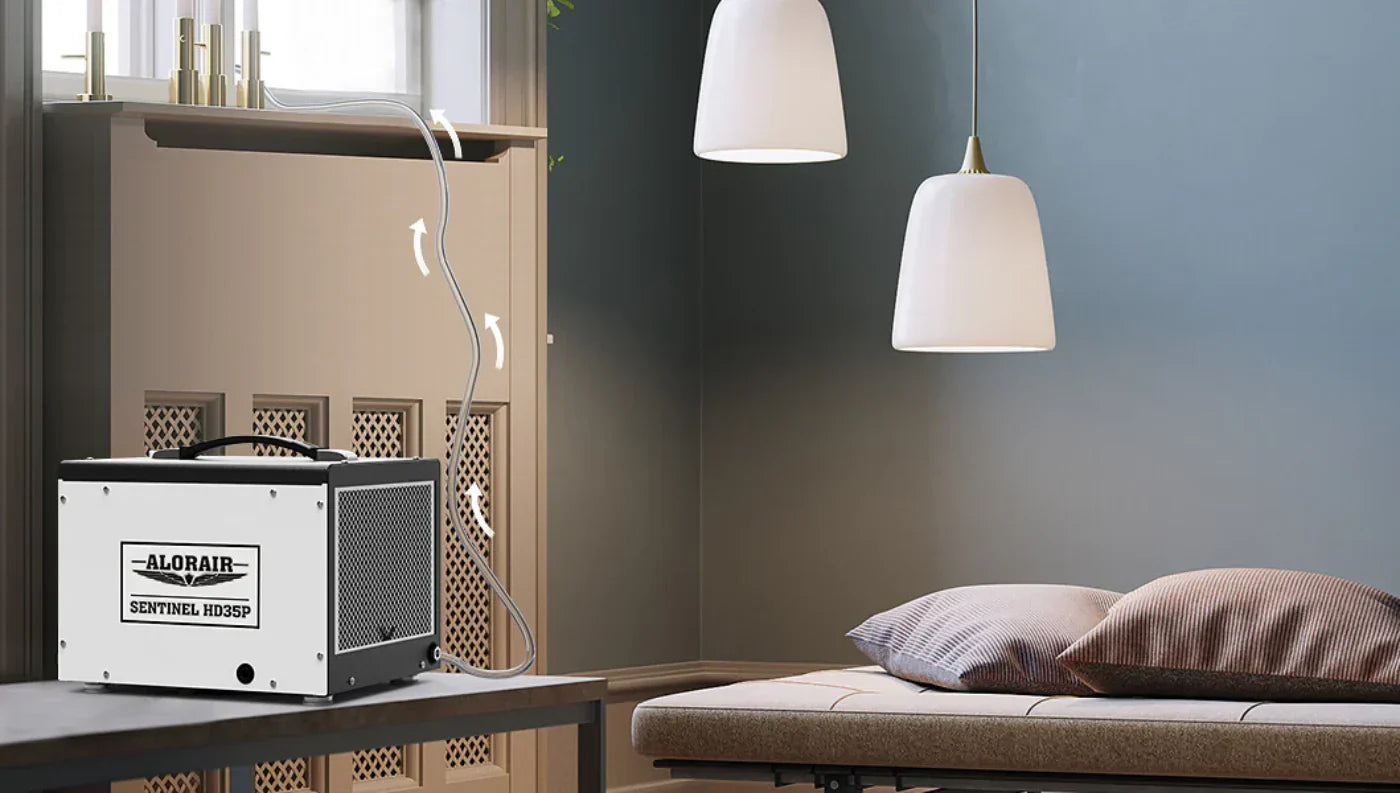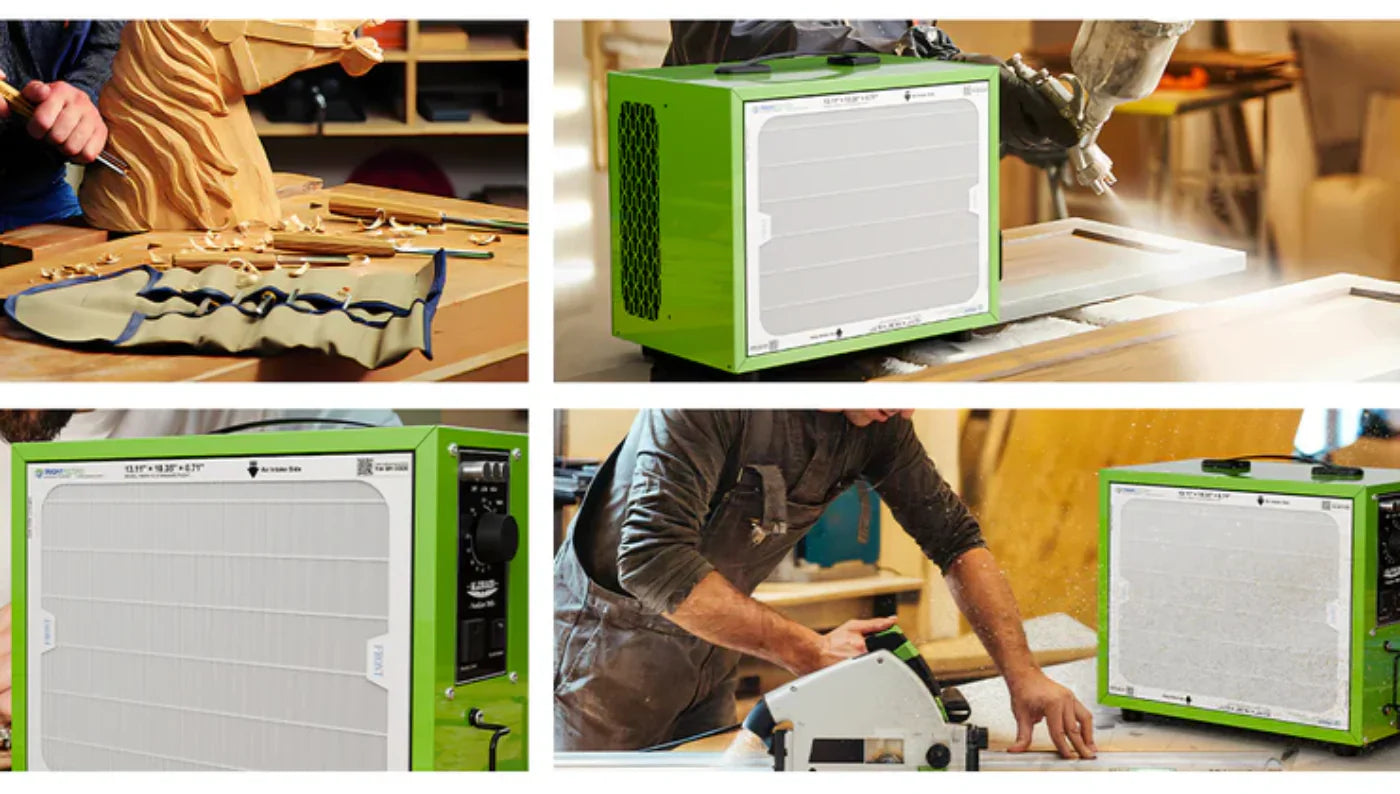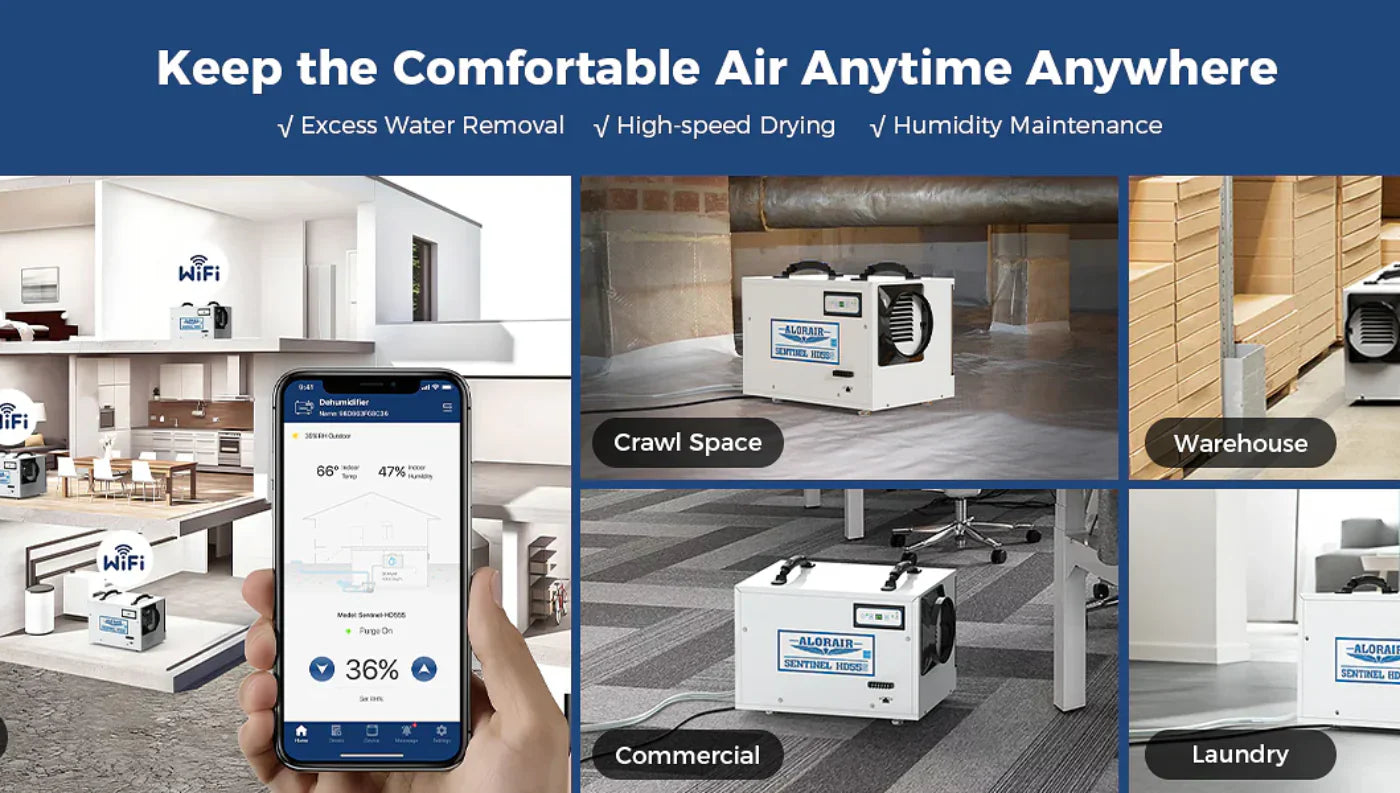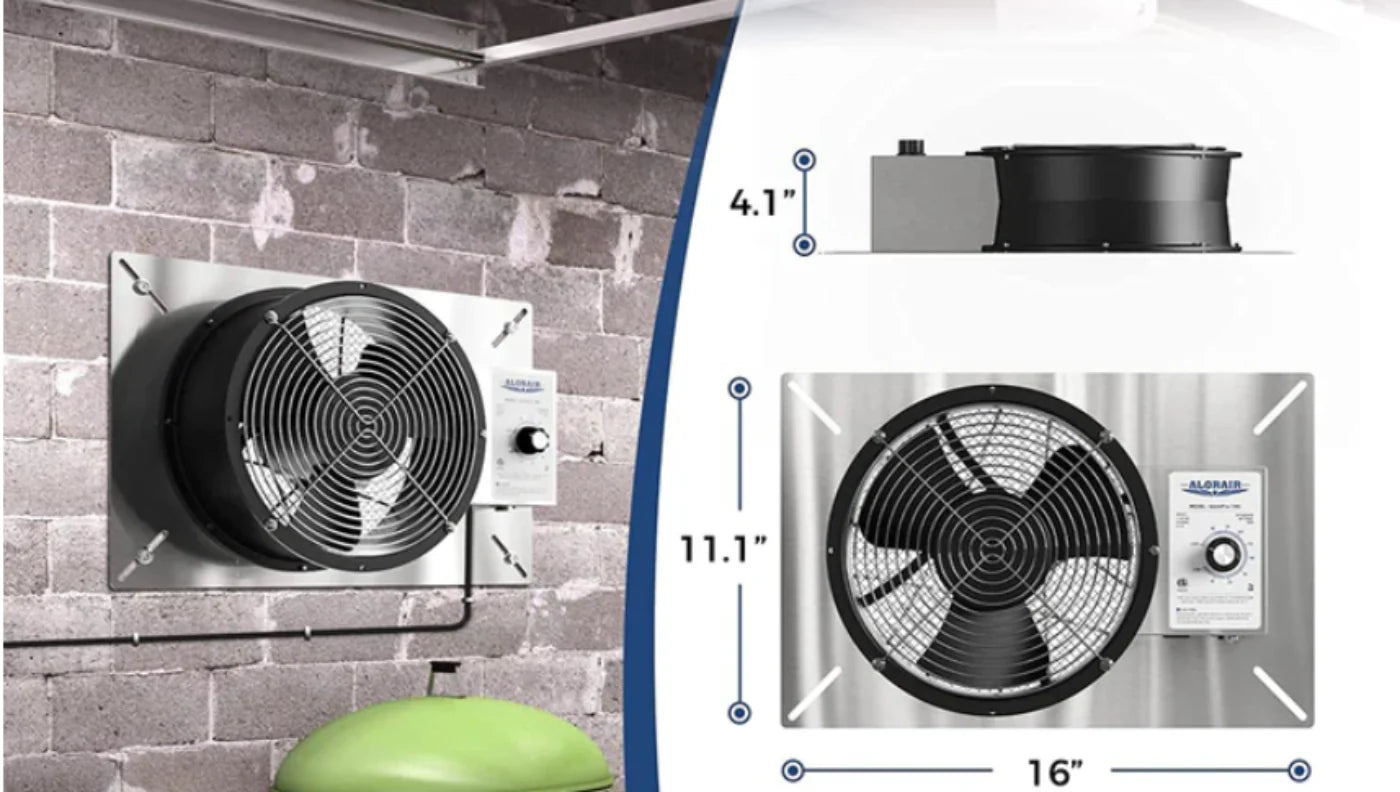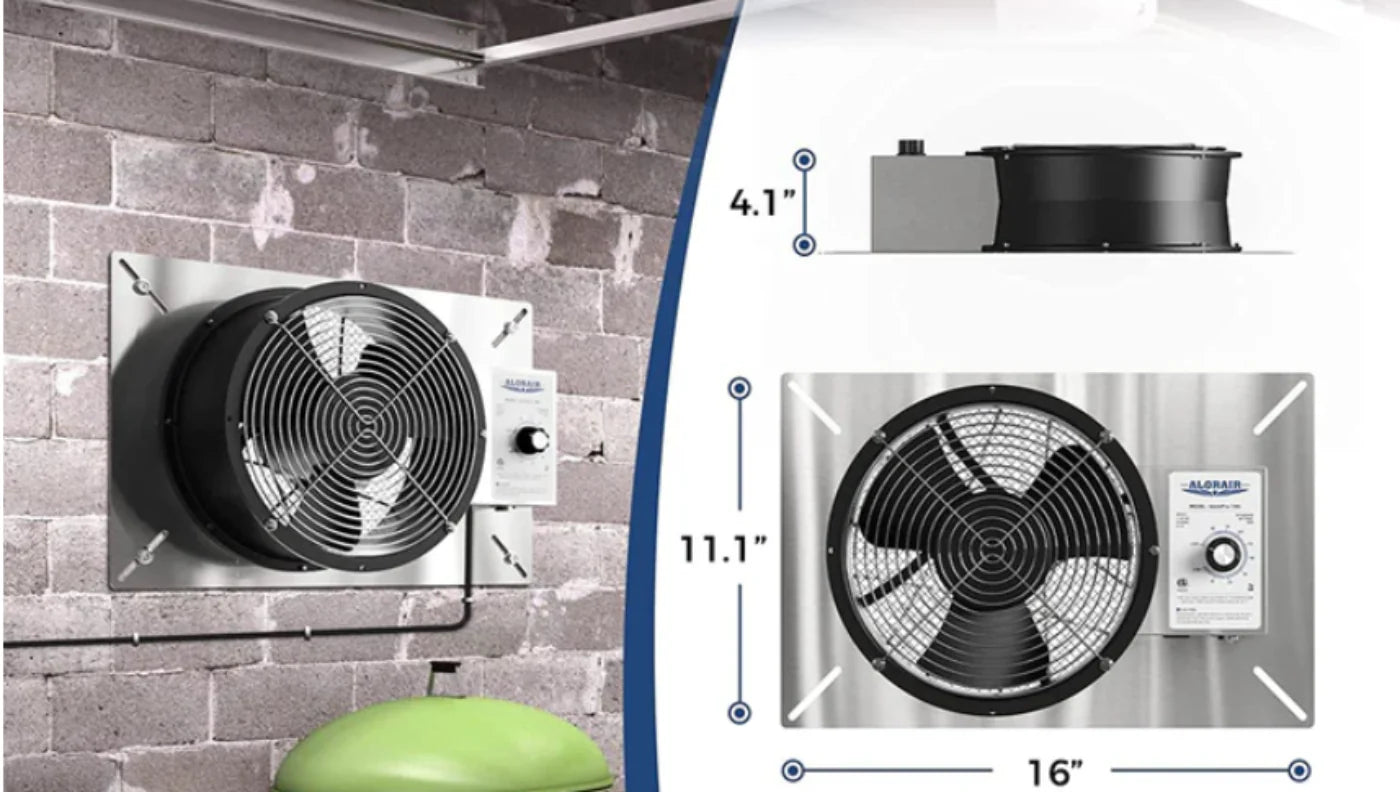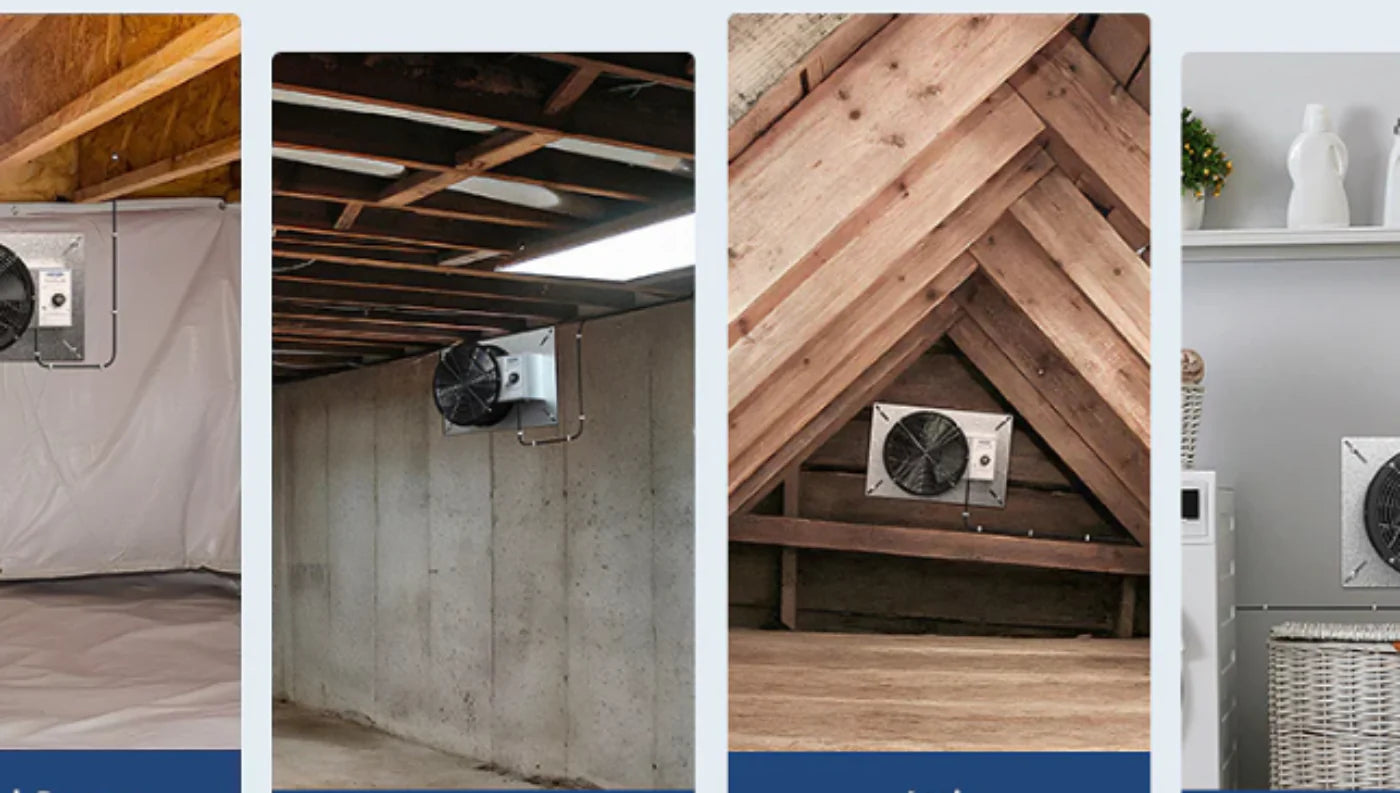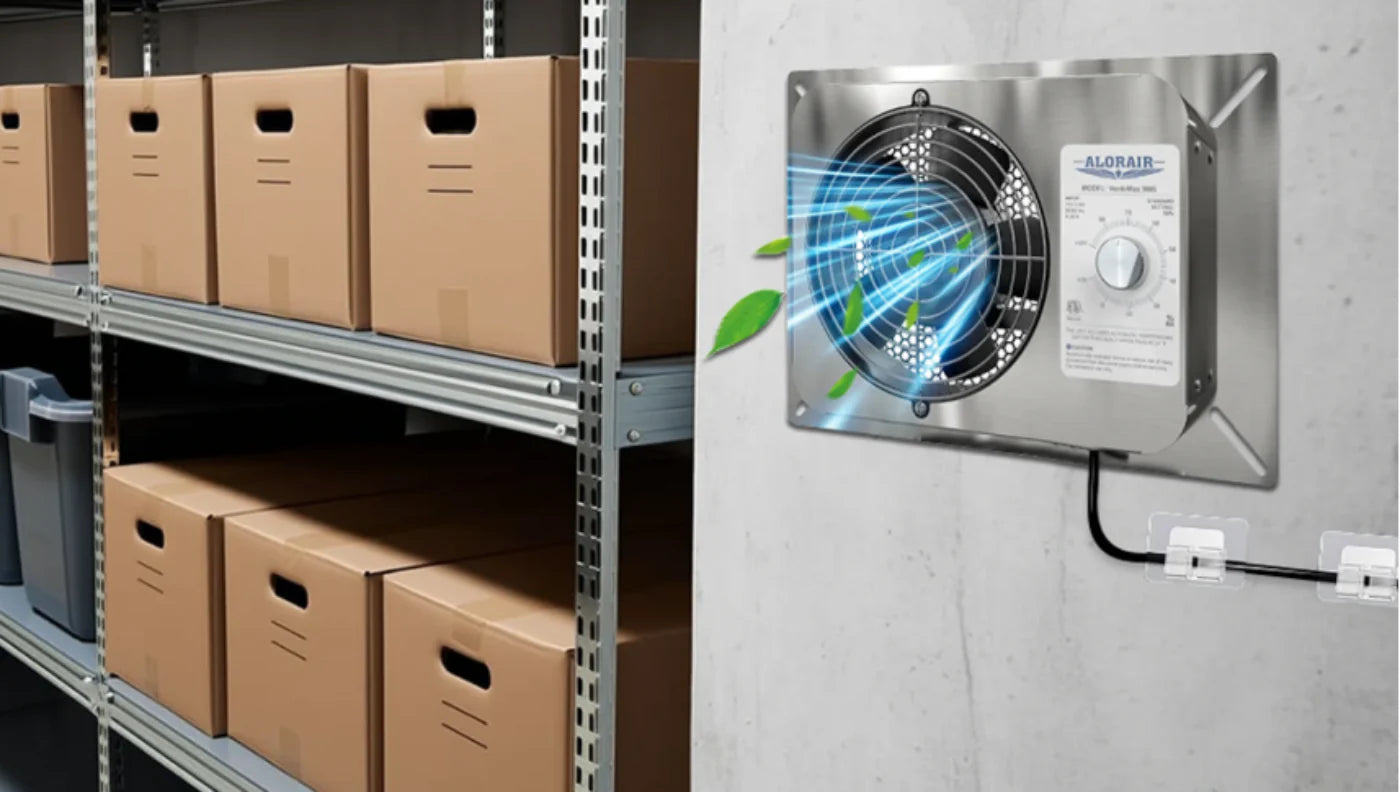Asthma attacks millions globally, turning breathing into an everyday challenge, particularly in houses with bad air quality. Insufficient or a little too much moistness in the air can both trigger asthma. The common asthma triggers are airborne irritants. So, does a dehumidifier help with asthma?
For those living in damp atmospheres, the answer is yes, a dehumidifier might help manage asthma signs by eliminating extra humidity from the air. Though a dehumidifier is not recommended as medication, utilizing dehumidifiers assists in lowering usual asthma triggers that increase respiratory signs.
Today’s post will look into the common asthma triggers indoors, the role of whole-house dehumidifiers and crawlspace dehumidifiers, and tips for maximizing the advantages of your dehumidifier.
What Triggers Asthma Indoors?

The initial step to making a secure environment is knowing indoor asthma triggers. Numerous components usually discovered in houses can make it tough for asthma sufferers to breathe:
-
Dust Mites: Dust mites are tiny viruses that grow in damp settings, specifically in upholstery, bedding, and carpets. Too much humidity generates perfect situations for these nuisances. That said, their feces are a big asthma trigger.
-
Mold and Mildew: These are airborne allergens that can lead to severe breathing problems. Mold thrives fast in humid settings such as basements or badly ventilated bathrooms. Therefore, several households select the best dehumidifier for mold to stop its growth.
-
Pet Dander: Skin peel-offs from dogs, cats, and more pets can stay in the air and fix on surfaces. The particles are readily inhaled and can cause asthma blowups, especially in confined or badly ventilated areas.
-
Humidity-Related Irritants: High humidity in house prompted the two mold formation and dust mites. Also, it makes the air weighty, which can multiply respiratory issues, particularly in hot seasons or in naturally humid climates like in the southeastern U.S. or Hawaii.
This is how humidity worsens asthma symptoms and makes it important to manage the indoor environment properly.
How Does Humidity Affect Asthma?
Humidity is the quantity of water content in the air. It’s calculated as relative humidity. Controlling indoor humidity is key for asthma comfort. Here’s how humidity in the air impacts respiration and asthma management.
What is relative humidity? Relative humidity is the moisture ratio in the air as opposed to the ultimate it can carry. Professionals approved maintaining indoor humidity levels between 30% to 50%. Typically, this selection assists in preventing the increase of irritants with effortless breathing.
Mold Grows in Humid Conditions
Excessive humidity in home zones, particularly in bathrooms and basements, encourages mold formation. Mold germs are in the air can can activate asthma signs. Individuals having asthma might wheeze, cough, or sense a burden on the chest while subjected to mold.
So, investing in the best dehumidifier for mold can prevent mold from increasing by eliminating dampness from the air. Crawlspace dehumidifiers or whole–house dehumidifiers function better in such states.
Dust Mites Thrive in Moist Air
Dust mites require water content to live. So, just as humidity levels are great, their figures rise fast. These microscopic pests discharge waste matter that can intensify asthma indications.
That said, dust mites' existence is difficult to notice however harmful for sensitive people. A best dehumidifier for asthma lowers humidity and reduces dust mite quantity. This paves the way for fresher air and hardly any asthma attacks.
Heavy, Humid Air Is Hard to Breathe
Damp air feels burdensome and difficult to breathe. Persons having asthma might fight to inhale as soon as the air carries high humidity.
It can result in out of breath or make asthma symptoms terrible in damp climates. A dehumidifier aids in drawing out excessive humidity and holds the air fresh and light.
Although increased humidity leads to several problems, too little humidity can disturb airways and dry the throat.
So, it’s essential to keep balance. A well-fixed dehumidifier holds humidity in the secure range and escapes from the two peaks.
What Does a Dehumidifier Actually Do?
A dehumidifier is a tool that eliminates extra dampness from indoor air. It works by bringing in the air from the area. Then it moves the air through chilled coils where humidity liquefies in water drops.
That said, the water is gathered in the tank or washed out using a hose. Then, the dried-out air is delivered into the room. The procedure minimizes the humidity and maintains the air in a good reach.
Types of Dehumidifiers
There’s a variety of dehumidifiers available depending on how and where they’re utilized:
Whole House Dehumidifiers: These dehumidifiers are linked to a house’s HVAC setup. The units manage humidity across the whole house. Whole-house dehumidifiers are best for people with asthma or allergy problems over several rooms.
Refrigerant Dehumidifiers: Refrigerant dehumidifiers are the most widespread types of dehumidifiers. The units pull in dampness from the air that precipitates on a metal body and chills the air during the procedure.
Desiccant Dehumidifiers: These dehumidifiers get in the water from the air, and through a substance within the unit, called desiccant, soaks up the water.
Now, let’s find out can a dehumidifier help with asthma.
Does a Dehumidifier Help with Asthma? Here's the Truth

The straightforward answer is yes, dehumidifiers can assist with asthma. Based on the place you live, a dehumidifier might be required for the whole year or only in a particular season.
Although dehumidifiers are not a medical treatment, they play a powerful active part in controlling asthma symptoms. Regulating indoor humidity, and limiting irritants can help make a fresher, healthful breathing atmosphere.
Mold grows in humid environments. The mold spores are a usual asthma trigger, particularly in moist houses. In such scenarios, the best dehumidifier for mold can help stop mold from increasing and discharging germs into the air.
Typically, whole-house dehumidifiers from brands like Aloraircrawlspace can manage humidity throughout all living areas, however, a crawlspace dehumidifier can attack unseen mold-prone spaces under your home.
Aloraircrawlspace dehumidifiers guarantee fresh air with advanced features like child lock, GPP mode, and 24H timer. Additionally, a dehumidifier for asthma assists in balancing moisture levels so that dust mites do not grow. This lowers the vulnerability to dust mite irritants, enhancing breathing for asthma patients.
Not a Cure, But a Useful Tool
It’s significant to consider that asthma and dehumidifiers are associated via atmospheric management _ not medication. Of course, a dehumidifier will not put back inhalers or further medicines. However, it aids in lowering the factors that result in regular blowups.
According to Dr. Jessica Shepherd, the chief medical advisor at Verywell Health, said, "Dehumidifiers should not be used to manage asthma, however, yes, they can ease asthma symptoms. However, the appliance is only useful if high humidity is a factor that is aggravating a person's asthma”.
Choosing the Right Dehumidifier for Asthma Relief
Not each dehumidifier is really the same thing. Selecting the correct one is essential to enhancing air quality and promoting asthma control. The aim is to keep a secure humidity rank throughout the house _ not overusing the device or forgetting moisture-prone zones.
Size and Coverage Matter
Typically, the size of the dehumidifier should complement the size of the area. A minor dehumidifier will not prove efficient in a big or humid house. For big spaces or houses having excessive humidity, whole-house dehumidifiers provide complete coverage and constant humidity management.
Besides, in humid spaces such as basements or crawl spaces, a crawl space dehumidifier functions best. It clears dampness where it gathered most and stops it from impacting the remaining house.
Look for Key Features
While choosing a best dehumidifier for asthma, look for some features. Automatic humidity control to keep humidity between 30 % - 50%, constant drainage to lower upkeep and stop overflow.
Also, energy efficiency is another important feature that reduces power consumption without lowering productivity and the filter system assists in catching airborne particulate.
That being said, Aloraircrawlspace dehumidifiers are made for efficient humidity control. These units are portable, energy-efficient, and tailored for continual functioning. They are best for attaching hot zones and safeguarding the whole home from dust mites, mold, and moisture-related irritants.
Other Ways to Improve Indoor Air for Asthma
Though dehumidifiers might assist in reducing humidity-caused asthma signs, they will function well next to other ways to manage asthma indoors:
-
Cleanse and vacuum routinely to prevent the increase of particles in the air.
-
Use dust mite-proof covers for box springs, mattresses, and pillows to stop dust mites from getting into bedding.
-
Ventilate kitchens and bathrooms with exhaust fans or open windows
-
Keep away from indoor smoking and lower the use of scented candles
-
Replace HVAC filters frequently, and maintain HVAC systems.
Conclusion
Thus, can a dehumidifier help with asthma? Yes. It boosts asthma comfort by lowering humidity, hindering mold formation, and minimizing dust mite levels. A dehumidifier for asthma is not a medical treatment. However, it plays a powerful part in enhancing indoor air quality. In case your home contains excessive humidity or evident symptoms of mold, it’s time to get to work.
Breathe Easier, Live Better!
Aloraircrawlspace provides validated solutions for indoor humidity management, involving innovative crawlspace dehumidifiers and whole-house dehumidifiers made to guard your health and your home. Explore our range today and discover the correct tool to promote fresher cleaner air for your whole house.




